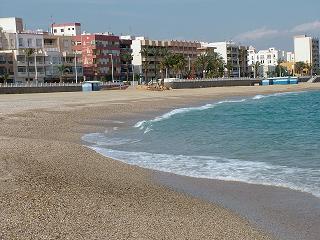Tuesday, 6 July, 2010, 08:11 AM
Publicado por mariamagdalena
The Angry client: (El cliente enfadado)
When dealing with this type of client it is better to agree with what they say rather than trying to calm them down.
(Cuando se trata con este tipo de clientes es mejor estar de acuerdo más bien que intentar calmarlos)
What not to do: - Avoid phrases such as:
(Qué no hacer: -Evitar frases tales como: )
“There is absolutely no reason to be angry”. Or “There is no motive for getting angry”.
(“No hay absolutamente ninguna razón para estar enfadado”. O “No hay motivo para enfadarse”).
What you should try to do: (Qué deberías intentar hacer:)
Find out why the client is angry. Could you tell me what happened?
(Averigua porqué el cliente está enfadado. ¿Podría decirme qué ocurrió?)
Do not make the client more defensive or irritated.
(No hacer que el cliente se ponga a la defensiva o irritado).
Calm the client down, if possible by moving the client to another area of the shop or office, or by offering a drink (if available). “Would you like to… “
Calma al cliente, si es posible moviendo al cliente a otra área de la tienda o de la oficina, u ofreciéndole una bebida (si es posible). “Le gustaría…”)
Analyze the problem. (Contact management if problem is serious). When did you buy…? Or How long have you had…?
(Analiza el problema. (Contacto con la dirección si el problema es serio). ¿Cuándo lo compró? O ¿Cuánto tiempo hace que usted tuvo…?)
Empathize, but do not promise anything that is impossible to fulfil. I´m extremely sorry that you had a problem with…
(Empatice, pero no prometa nada que sea imposible de conseguir. “Siento enormemente que usted tenga un problema con…)
Negotiate. I´ll see what we can do. (Negociar. Veré que podemos hacer.)
The Aggressive client: (El cliente agresivo)
Aggressive by nature and difficult to placate.
( Agresivo por naturaleza y difícil de apaciguar).
What not to do: -become aggressive. Lose your patience and your self-control.
(Qué no hacer: -Ponernos agresivos. Perder la paciencia y el autocontrol.)
What you should try to do: (Qué deberías intentar hacer:)
Ask for the clients´opinion. “What do you think sir/madam?”
(Preguntar la opinión del cliente: ¿Qué piensa Señor/a?)
Focus the argument or conversation on positive aspects, for example, things that the client agrees with. “I think you´re right it could be the…”
(Enfoca el argumento la conversación en aspectos positivos, por ejemplo, cosas con las que el cliente esté de acuerdo. “Pienso que usted tiene razón, podría ser el…”)
Analyze the problem. (Contact management if problem is serious).
(Analiza el problema. Contacta con dirección si el problema es serio).
Be patient. (Ser paciente)
The Talkative client: (El cliente hablador )
This type of client is a natural time waster. On a normal day you don´t have time to sell the client the product(s) and listen to the story of his/her life.
(Este tipo de cliente es una pérdida de tiempo. En un día normal tú no tienes tiempo de venderle al cliente el/los producto/s y escuchar la historia de su vida (de él/ella)).
What not to do: -do not be impatient. (Qué no hacer: - No impacientar)
What you should try to do: (Qué deberías intentar hacer: )
Show interest. “Let´s see what we can do…
(Muestra interés: “Vamos a ver qué podemos hacer…”)
Ask all the relevant questions then guide the conversation towards a conclusion.
(Preguntar todas las cuestiones relevantes guiando luego la conversación hacia una conclusión).
What this type of client usually wants is a little empathy. “I´m sure that this will be solved in no time at all”.
(Lo que éste tipo de cliente normalmente quiere es empatizar. “Estoy seguro de que eso se resolverá en breve”).
The unhappy client: (El cliente insatisfecho)
This type of customer is dissatisfied with life in general.
(Este tipo de consumidor está insatisfecho con la vida en general).
In spite of all your efforts there is a big possibility that the client will leave the shop or office feeling exactly as they did when they entered.
(A pesar de todos tus esfuerzos hay una gran posibilidad de que el cliente saldrá de la tienda o la oficina sintiendo exactamente lo que ellos sentían que cuando ellos entraban).
What not to do: -do not try to force them into buying.
(Qué no hacer: -No intentar forzarlos para que compren).
What you should try to do: be kind and comprehensive, try to collaborate and to help them find what they are looking for.
(Qué deberías intentar hacer: ser amable y comprensivo, intentar colaborar y ayudarlos a encontrar lo que ellos están buscando).
The complainer: (El cliente quejica)
The client that is impossible to satisfy. The service is bad, the prices are expensive, the colour is wrong, etc.
(El cliente es imposible de satisfacer. El servicio es malo, los precios son caros, el color no es correcto.)
What not to do: -sell them to shut up.
(Qué no hacer: -decirles que se callen).
What you should try to do: allow the customer to complain. Sort the truth out from the fiction and then offer a viable solution. “I think you may have a point. Let´s see what we can do…
(Qué deberías intentar hacer: Permitirle al cliente quejarse. Separar la verdad de la ficción y luego ofrecer una solución viable. “ Pienso que tiene algo de razón. Voy a ver qué podemos hacer…”)
The offensive client: (El cliente ofensivo)
Insults and bad language are commonly used by this type of customer.
(Insultos y mal lenguaje son comúnmente usados por este tipo de cliente).
What not to do: - throw them out or become sarcastic.
(Qué no hacer: - Echarlos o llegar a ser sarcástico).
What you should try to do: be kind, exceptionally kind. They usually have no answer.
(Qué deberías intentar hacer: ser amable, excepcionalmente amable. Normalmente no tienen respuestas).
The demanding client: (El cliente exigente)
Continuously interrupts. They need attention all the time.
(Interrumpe continuamente. Necesitan atención todo el tiempo.)
What you should try to do: Treat this type of client with respect, but try to resolve their demands or problem rapidly and successfully.
(Qué deberías intentar hacer: Trata a este tipo de cliente con respeto, pero intenta resolverle sus demandas o problemas).
The pest: (La peste)
Insinuations, double entendres with sexual implications, can come from both men and from women.
(Insinuaciones, doble sentido con implicaciones sexuales, pueden venir de ambos, hombres y mujeres).
What not to do: -play them at their same game. Do not let yourself become involved in their insinuations.
(Qué no hacer: - Seguirles el juego. No permitas dejarte llevar en sus insinuaciones).
What you should try to do: -keep calm and be professional all the time. Deal with the client, make the sale and hopefully they will leave as soon as possible.
(Qué deberías intentar hacer: -Guardar la calma y ser profesional todo el tiempo. Trata con el cliente, haz la venta y con suerte ellos se irán tan pronto como sea posible).





 ( 3 / 1231 )
( 3 / 1231 )






 ( 3 / 1231 )
( 3 / 1231 )

